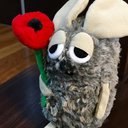Heart-specific overexpression of choline acetyltransferase gene protects murine heart against ischemia through hypoxia-inducible factor-1α-related defense mechanisms.
Ключови думи
Резюме
BACKGROUND
Murine and human ventricular cardiomyocytes rich in acetylcholine (Ach) receptors are poorly innervated by the vagus, compared with whole ventricular innervation by the adrenergic nerve. However, vagal nerve stimulation produces a favorable outcome even in the murine heart, despite relatively low ventricular cholinergic nerve density. Such a mismatch and missing link suggest the existence of a nonneuronal cholinergic system in ventricular myocardium.
RESULTS
To examine the role of the nonneuronal cardiac cholinergic system, we generated choline acetyltransferase (ChAT)-expressing cells and heart-specific ChAT transgenic (ChAT-tg) mice. Compared with cardiomyocytes of wild-type (WT) mice, those of the ChAT-tg mice had high levels of ACh and hypoxia-inducible factor (HIF)-1α protein and augmented glucose uptake. These phenotypes were also reproduced by ChAT-overexpressing cells, which utilized oxygen less. Before myocardial infarction (MI), the WT and ChAT-tg mice showed similar hemodynamics; after MI, however, the ChAT-tg mice had better survival than did the WT mice. In the ChAT-tg hearts, accelerated angiogenesis at the ischemic area, and accentuated glucose utilization prevented post-MI remodeling. The ChAT-tg heart was more resistant to ischemia-reperfusion injury than was the WT heart.
CONCLUSIONS
These results suggest that the activated cardiac ACh-HIF-1α cascade improves survival after MI. We conclude that de novo synthesis of ACh in cardiomyocytes is a pivotal mechanism for self-defense against ischemia.



